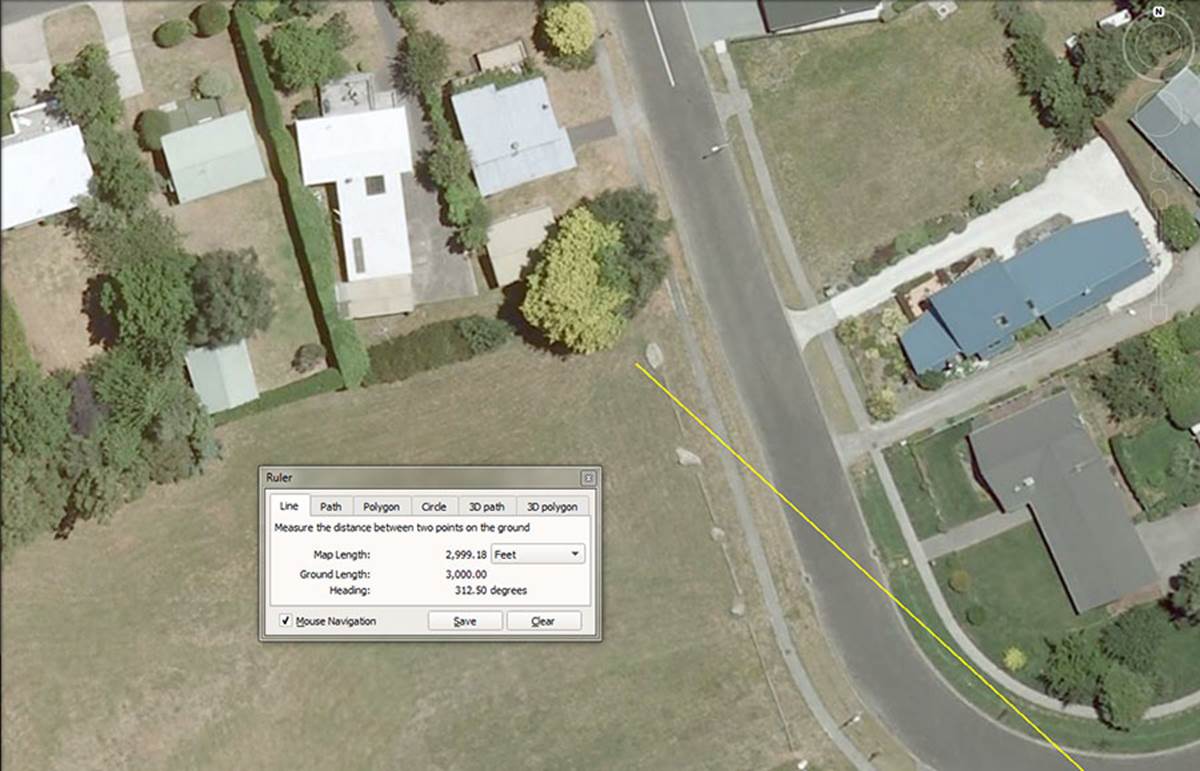
SUBDIVISION BOULDERS & LOST POSITIONS.
Within the Wharewaka subdivision, as well as the surrounding reserves, many component obelisks of the former standing stone site have been plundered for use as fence-line features or ornamentation within gardens, etc. Some of these have ancient bullaun bowls carved into them or cross-hatching incising over their surfaces, showing that the positions or obelisks themselves had significance to the ancient people who erected them.

Large slab boulders adorn the fence-line edge that leads into the Wharewaka Point Lakeside Reserve and were laid out in this configuration sometime after 1999. Prior to that time they lay in a cluster or cairn at approximately 3000-feet from the hubstone on a coded angle of 312.5-degrees.
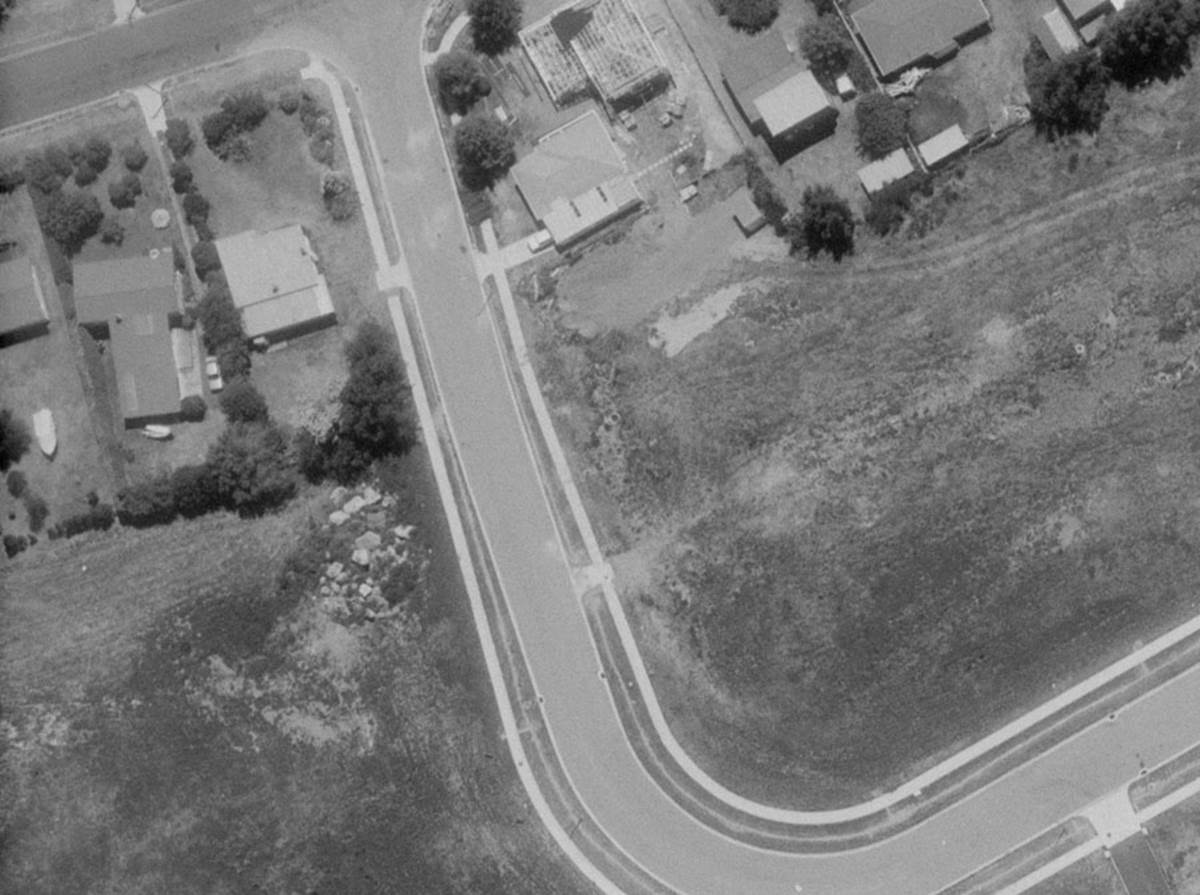
The large obelisk slabs were derived from a boulder cairn (bottom left) shown in this 1987 photo. Perhaps this was a boulder dump of obelisk components, pushed together by bulldozers when roads were put in for Wharewaka subdivision number 1. A second probable code of position was 2953.125-feet from the hubstone @ 312.5-degrees, as this was a highly important lunar code.

This giant obelisk has an ancient bullaun (bowl) carved into its surface and, if in ancient Ireland, that would indicate use as a blessing and cursing altar. It also has incised lines running at 90-degrees across the bullaun bowl.
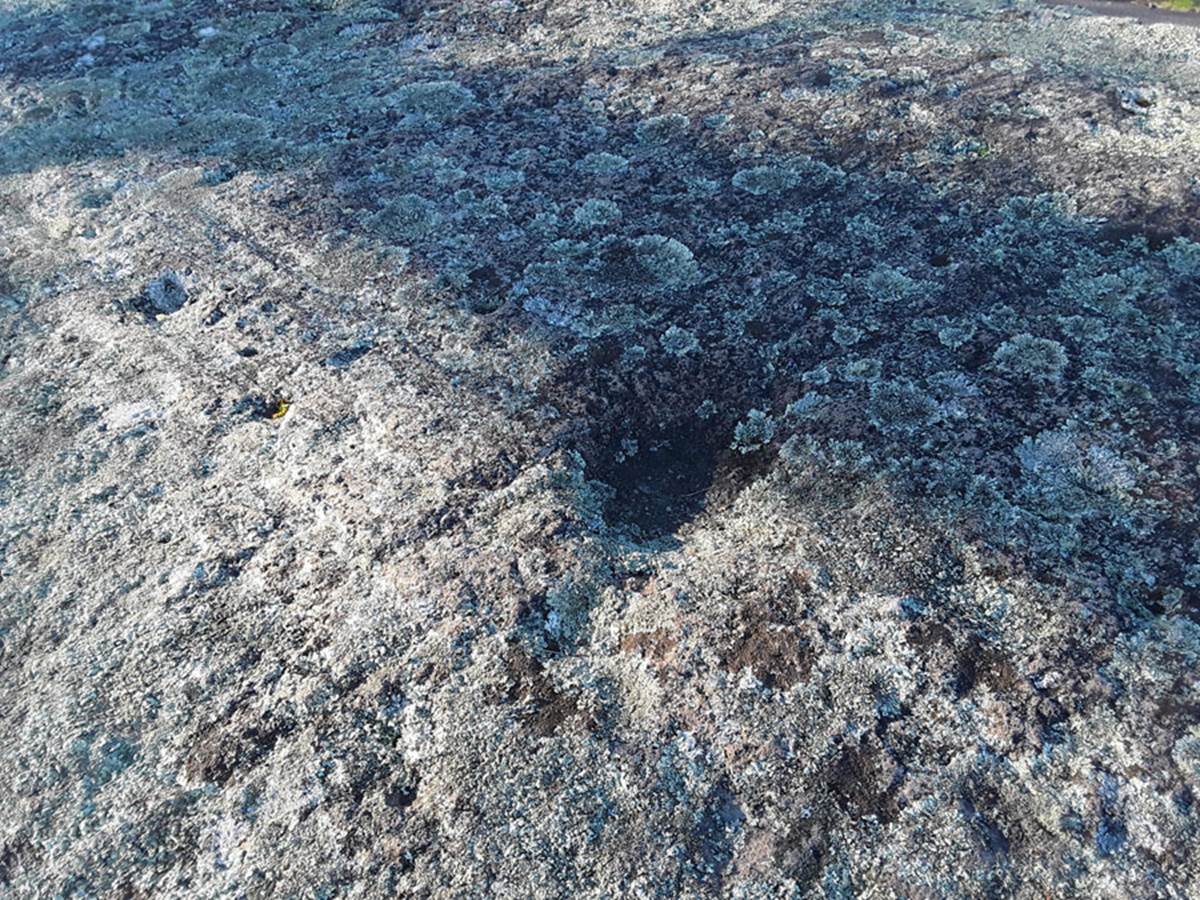
The carved out bullaun, crossed by incised lines.

Yet another of the reserve barrier obelisks, this one with a carved out bullaun bowl, bathed in shadow, as well as straight line incising marks.
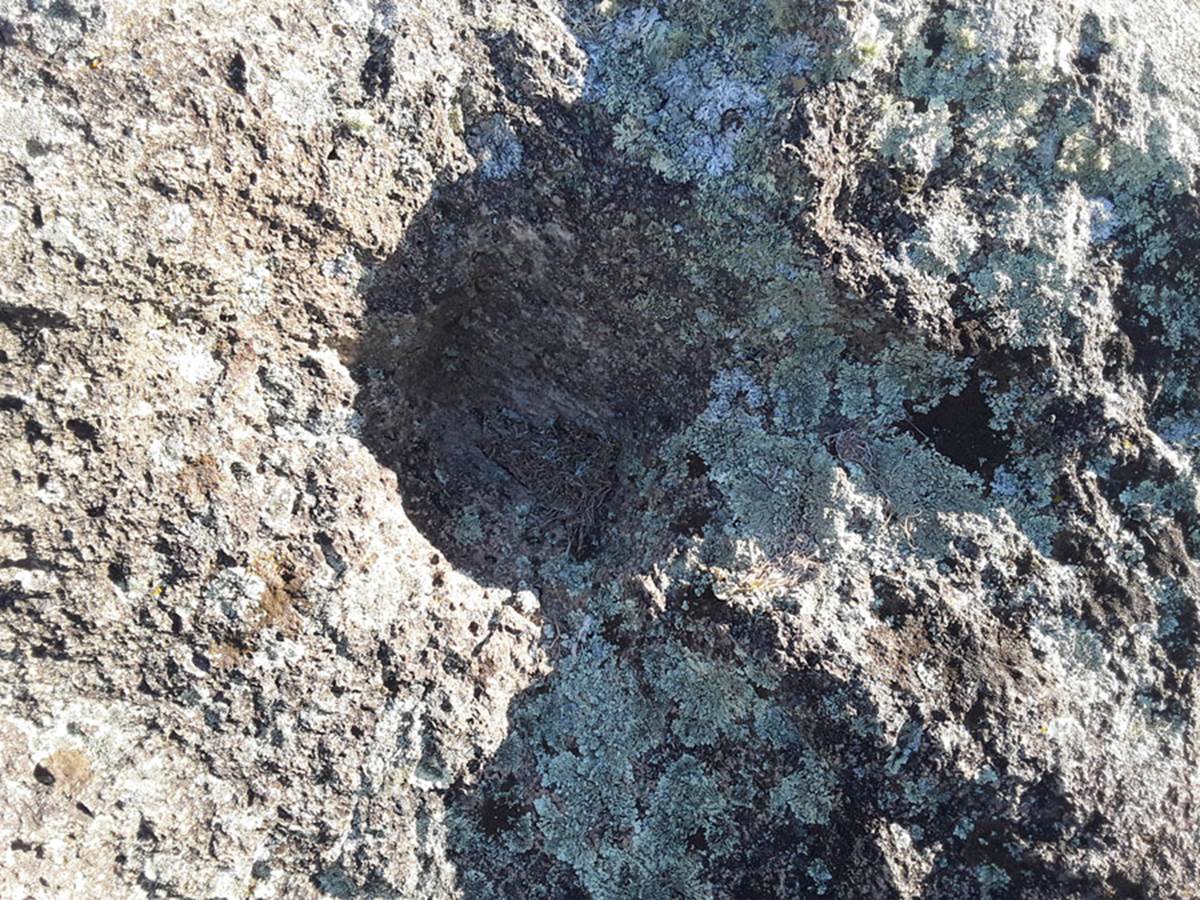
The bullaun in the second huge obelisk now used as a barrier fence to prevent car access onto Wharewaka Point Reserve.
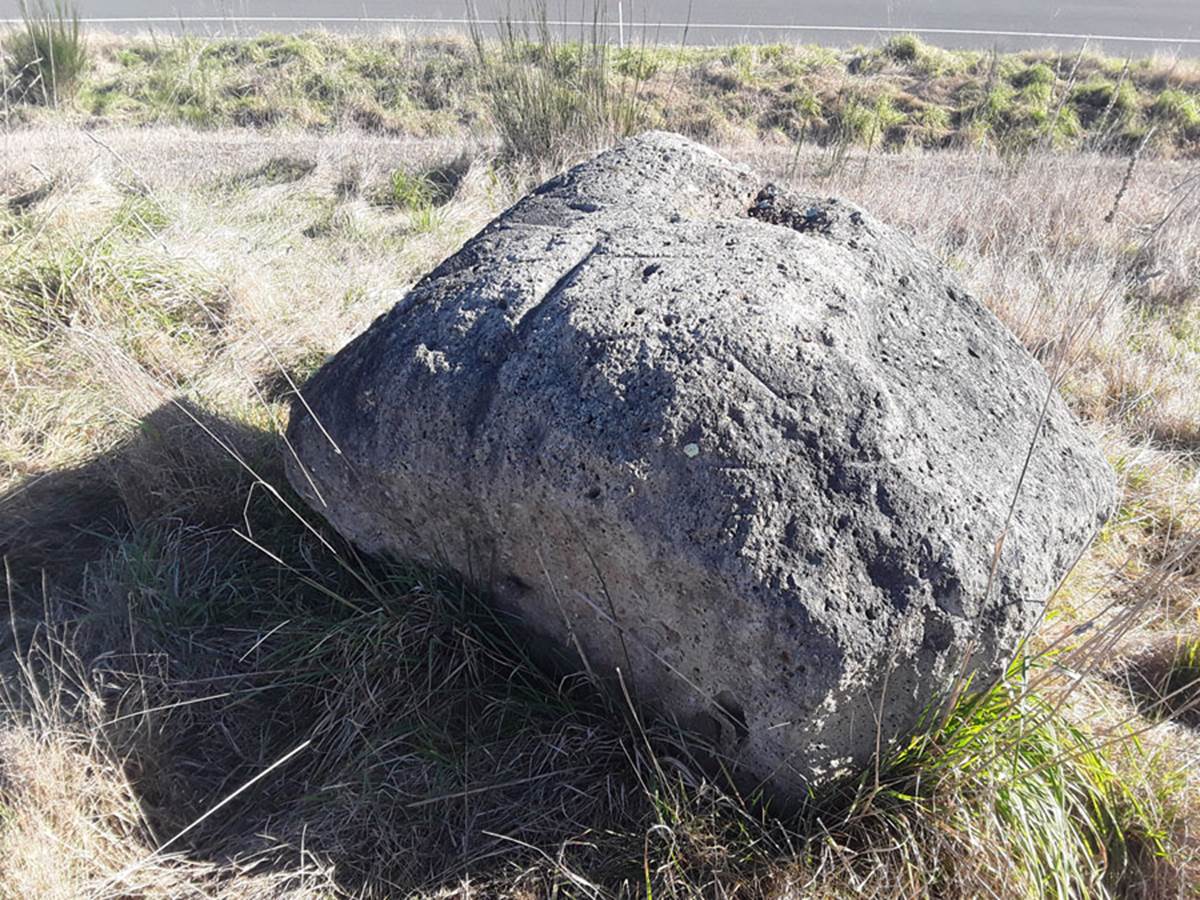
A boulder eastwards across the highway from the hubstone has a considerable number of incised, cross-hatching lines over its surface.
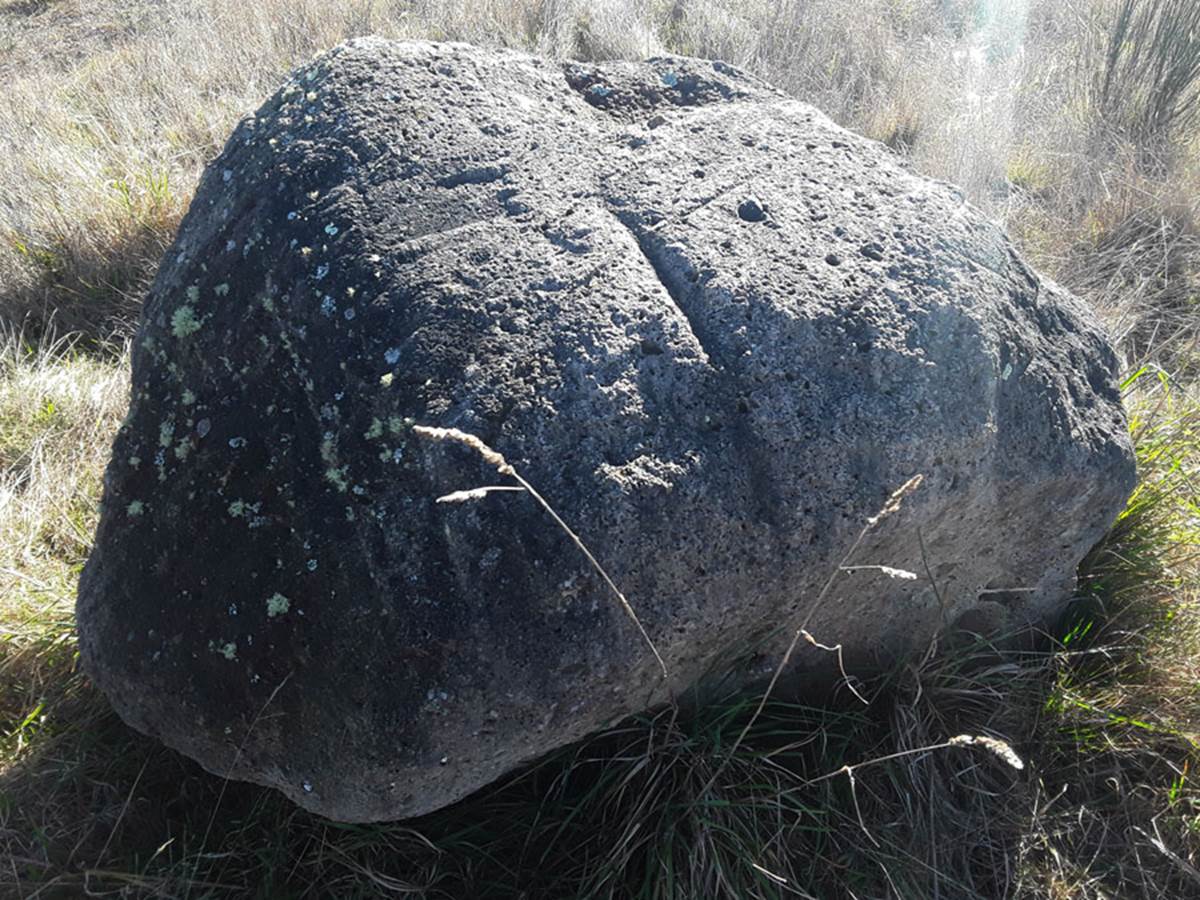
Long incised lines criss-cross the boulder and it probably represented a directional marker. It is part of an alignment of impressive boulders that are situated across the main highway, beginning at a point 300-feet away from the hubstone and at 40-degrees.
The line was probably put there by the ancient astronomer-surveyors to give a series of even degree angle readings fanning around from 40-degrees NE to 10-degrees NNE or so. The boulder line runs along a fence-line, much of it now under bush. A boulder pile or cairn, under trees adjacent to the old farm gate, might be made up of former components of the boulder line, pushed into a heap during road construction for the main highway.
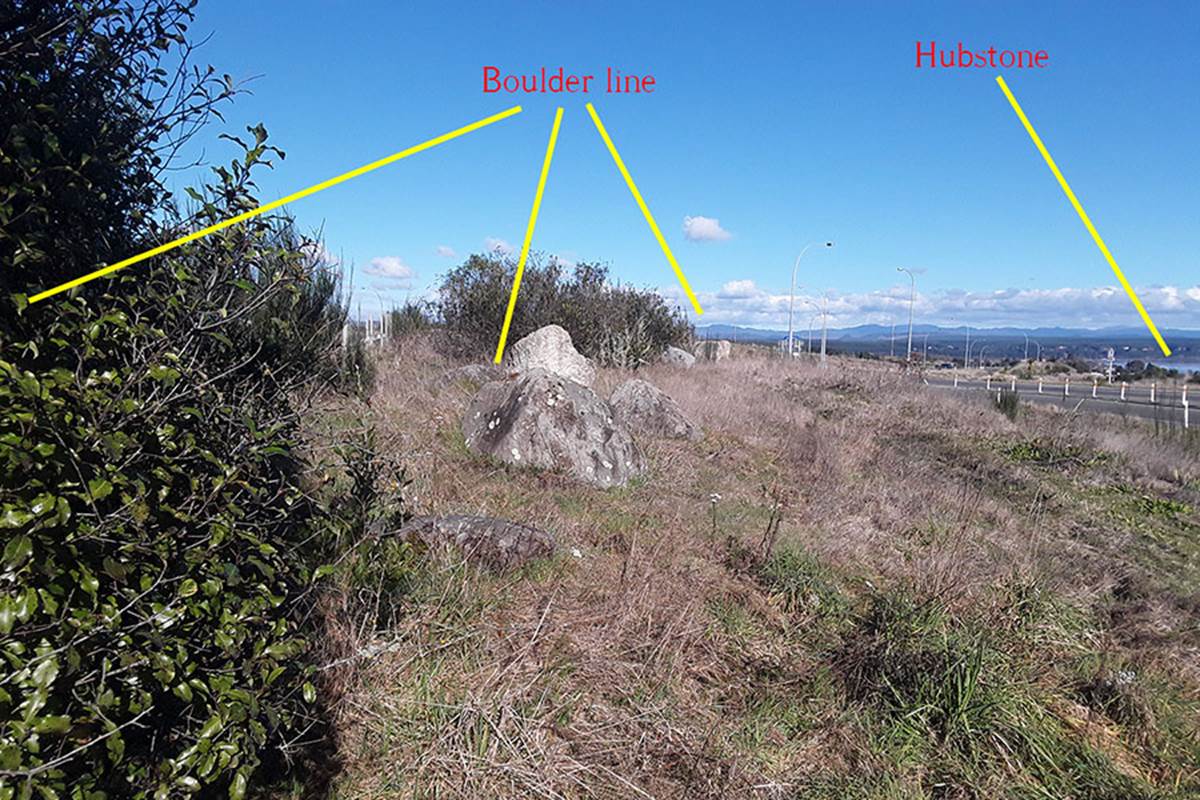
This line of boulders seemed to originally function for marking specific degree angles from NE to NNE of the hubstone situated across the highway. Another similar boulder line was laid out to the ENE at 600-feet distance from the hubstone.

What’s left of the ENE boulder alignment after many years of neglect and abandonment. Some of these boulders were observed to have incised features also.